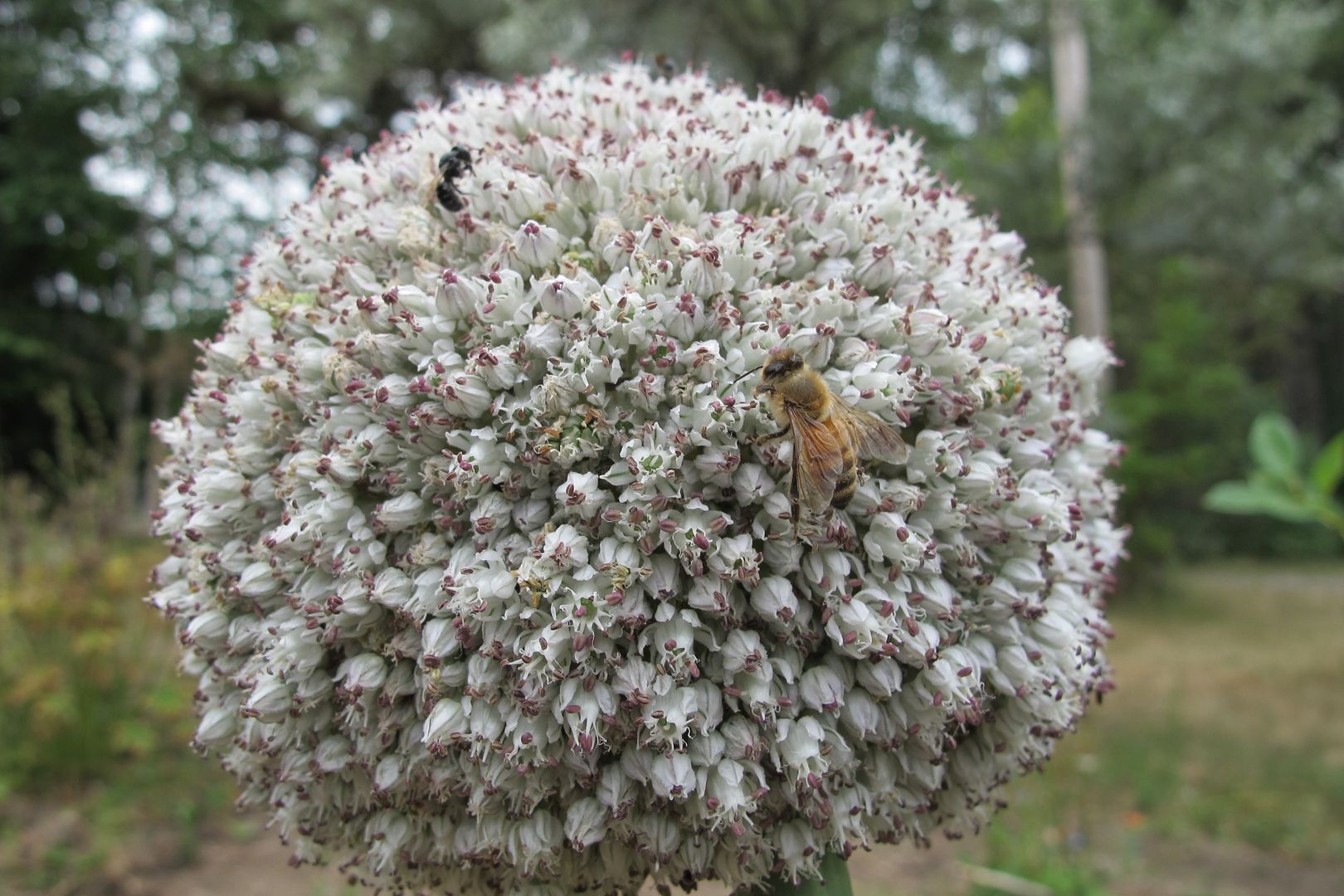 Flowerhead standing at about 4 feet and attracting the bees in Summer 2012
Flowerhead standing at about 4 feet and attracting the bees in Summer 2012
In Summer 2011, I grew a nice crop of leeks mostly blue leafed, winter hardy sorts such as the Long Island Seed Project's blue leek seed. In fall 2011, I left some of the nicer blue ones to overwinter and they produced flowers this year. A portion of them were partly *hairy.* That is instead of having flowers, they produced green baby leeks.
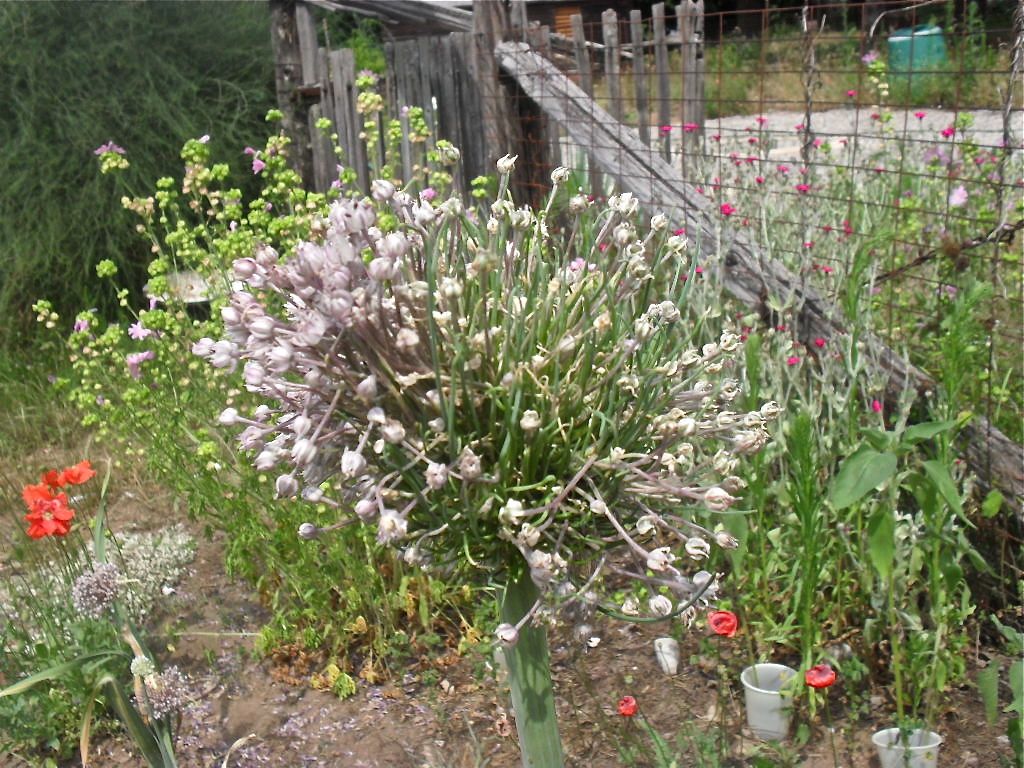 Fuzzy picture of leek trying it both ways: sexual and asexual reproduction.
Fuzzy picture of leek trying it both ways: sexual and asexual reproduction.
Apparently you can induce leek to grow this
grass by trimming flower heads so I'm wondering if these flower heads were partially damaged. This technique is used to make leek lines for exhibition.
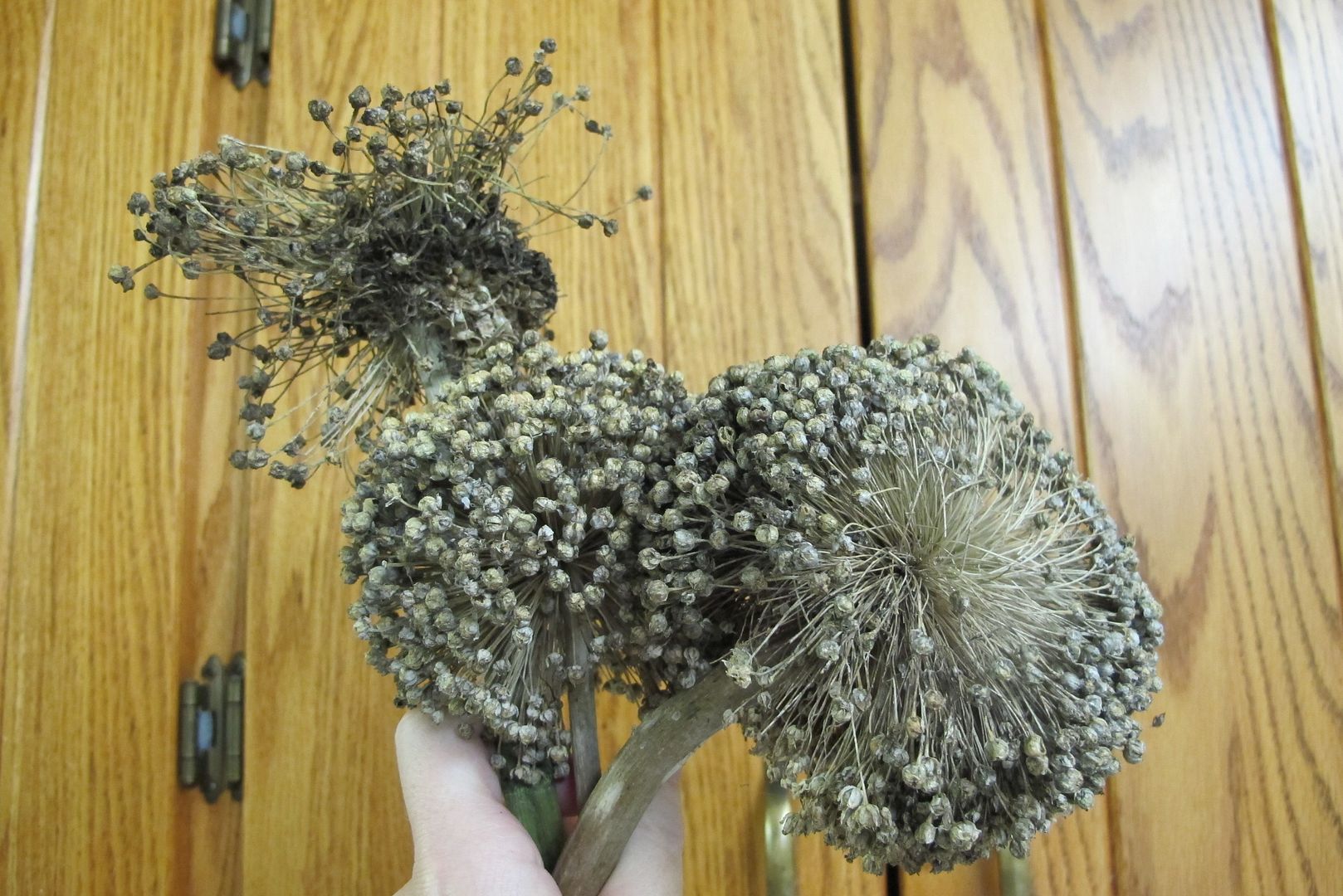 Sitting around on the bookshelf until I finally had time to thresh
Sitting around on the bookshelf until I finally had time to thresh
Turns out that the leek grass made bulbils (rather like garlic bulbils). After harvesting their flower heads, turns out that they had also produced offsets - little leek bulbs produced beside the main one rather like a potato onion or garlic once again.
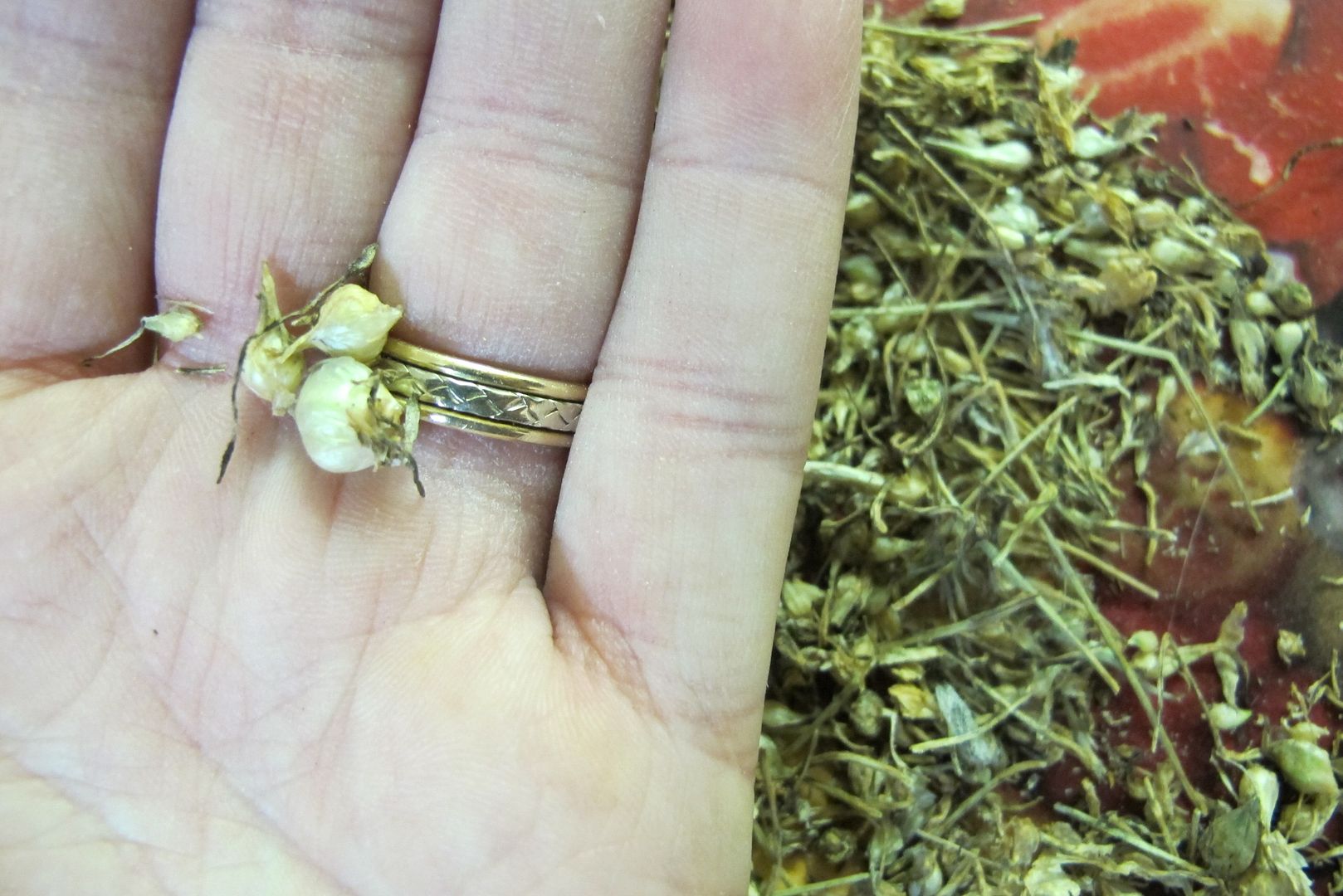 I wasn't expecting leek bulbils even though I'd seen the hairy green baby leeks growing up from the flowerhead earlier in the year.
I wasn't expecting leek bulbils even though I'd seen the hairy green baby leeks growing up from the flowerhead earlier in the year.
I put aside the bulbils to see if they will still grow - some had bitty roots on them - and separated the seed capsules from the stems.
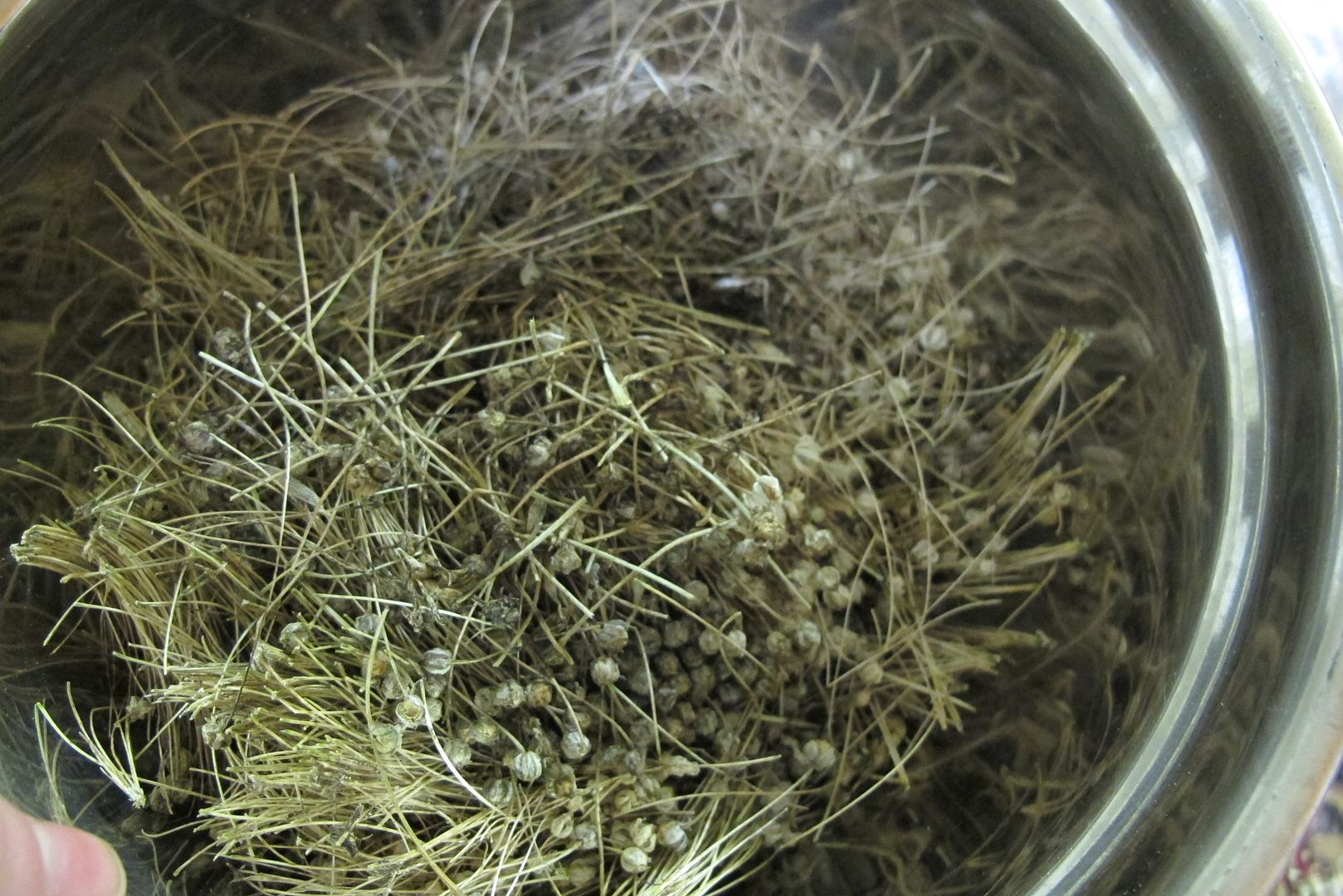 Seed capsules waiting in a bowl.
Seed capsules waiting in a bowl.
There were also many leek moth cocoons that did not appear to had produced fully fledged adults (no I'm not sad).
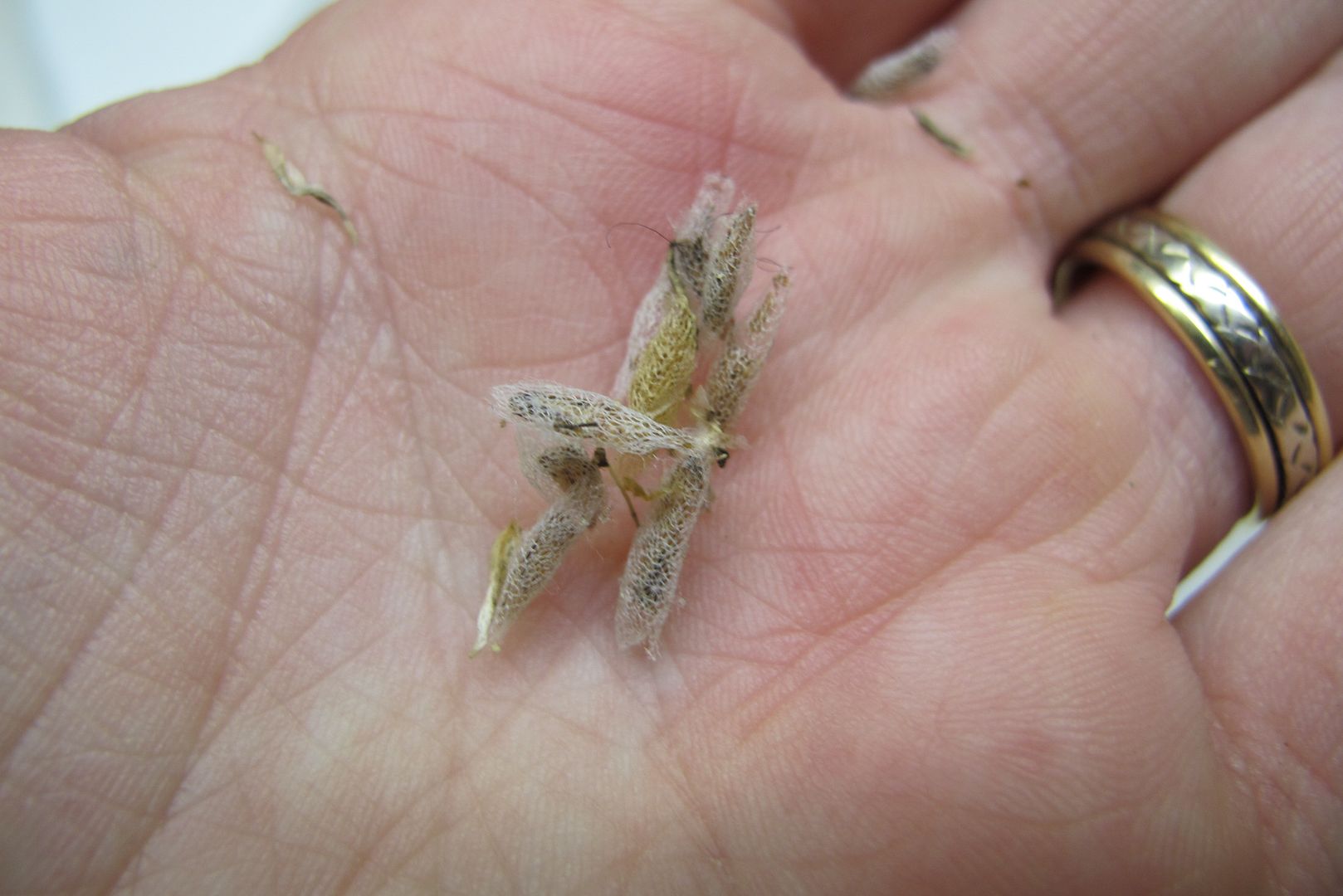 I had picked off a bunch of these during the year from stems and leaves but didn't see them on the flower heads. These were clearly not happy little munching moth larvae.
I had picked off a bunch of these during the year from stems and leaves but didn't see them on the flower heads. These were clearly not happy little munching moth larvae.
If you have only a few, you could rub them between your fingers (or with gloves depending on how hard they are) and remove the seeds that way. Given that I was not feeling very zen, I stuck mine in a LCBO bag - nice sturdy paper - and applied my rolling pin.
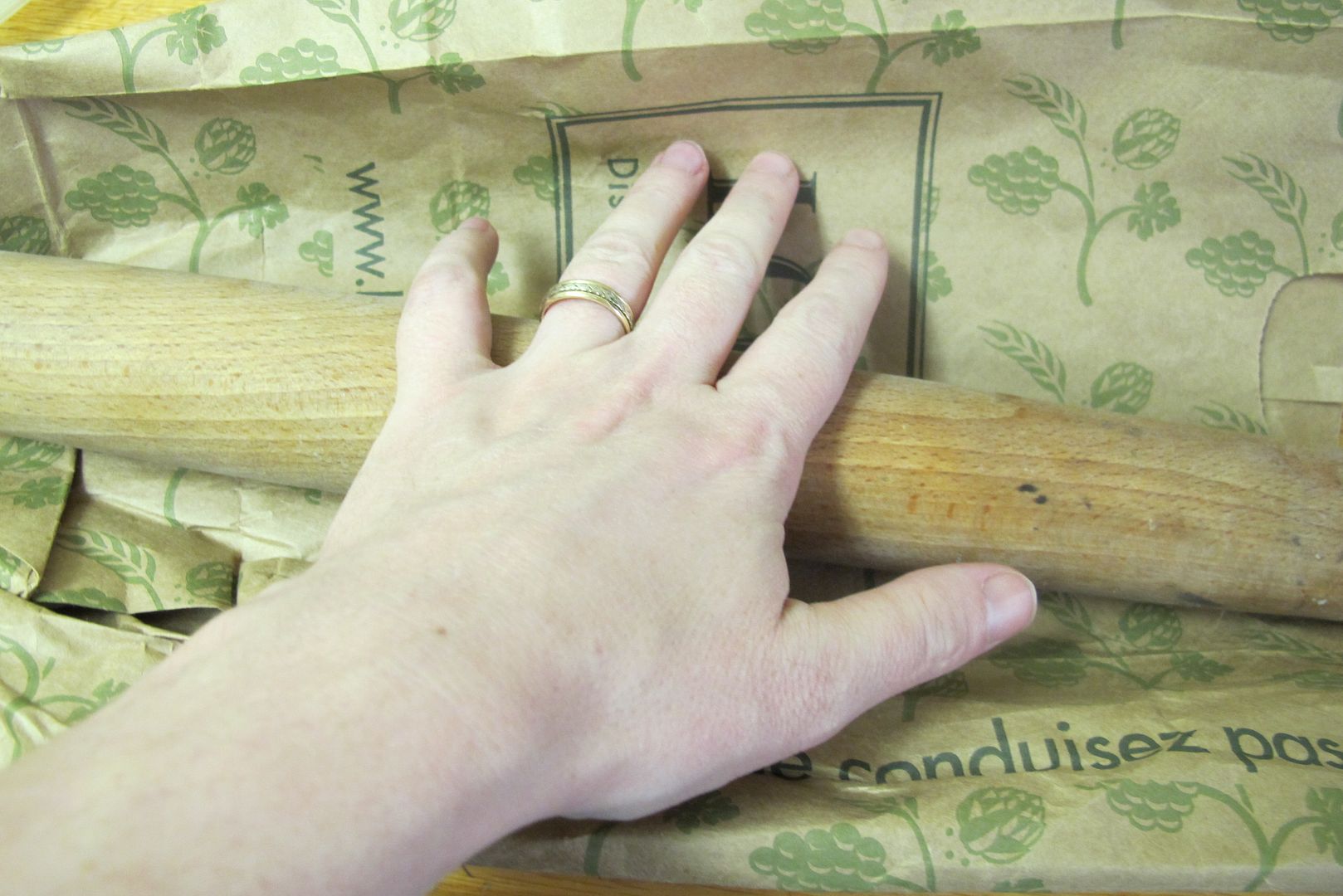 I first used a lunch bag but the LCBO bag was much better. You want to spread them rather thin and proceed lightly if you have a heavy hand.
I first used a lunch bag but the LCBO bag was much better. You want to spread them rather thin and proceed lightly if you have a heavy hand.
Afterward, I took the chaffy mess and put it in water. The chaff was pretty light, so you could probably use other methods such as blowing, wind or fan but I was inside so I used water separation.
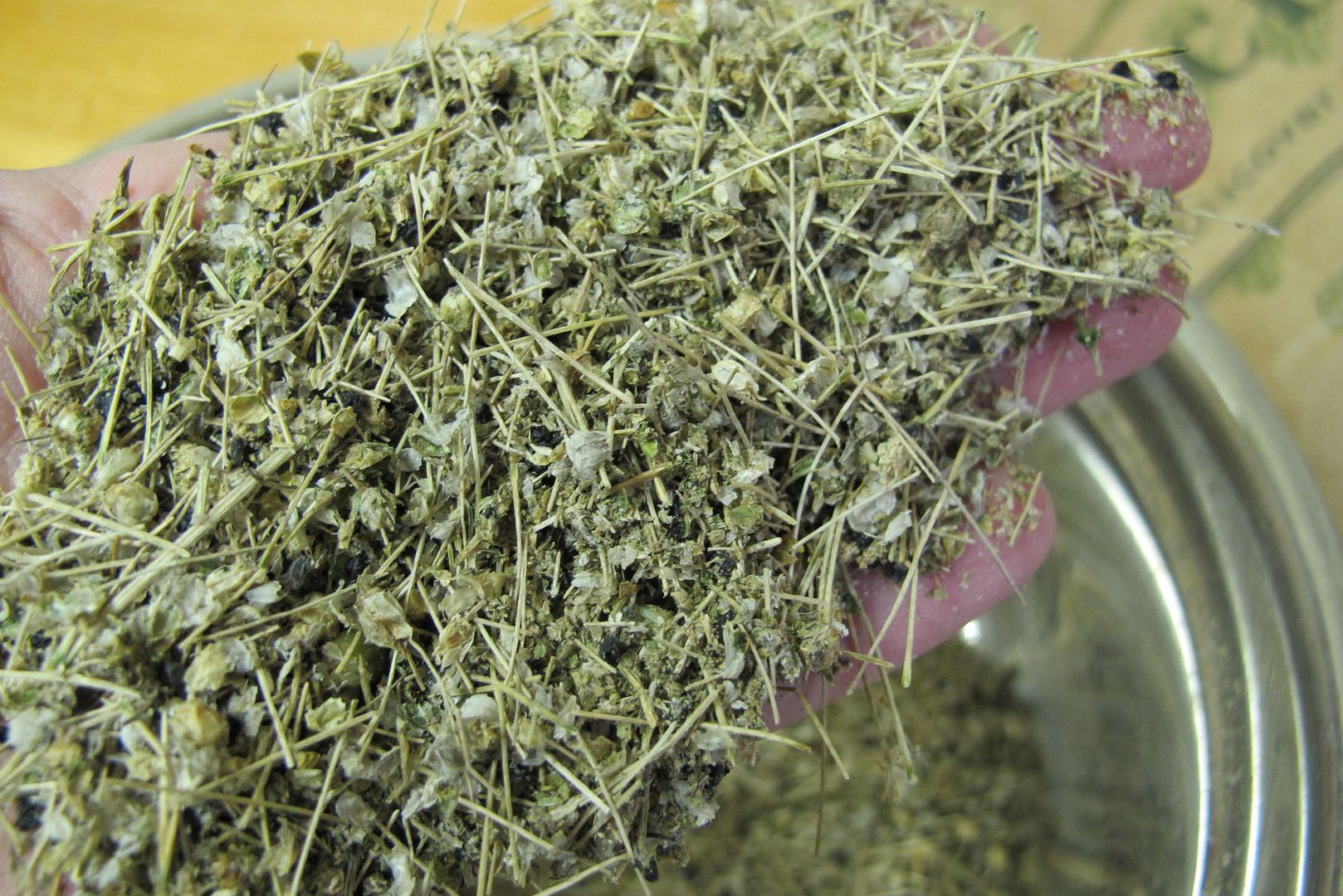 I don't bother to do this if seed sinks to the bottom of the bowl but in this case, it couldn't so I used the fact that the chaff was more buoyant to separate the seeds.
I don't bother to do this if seed sinks to the bottom of the bowl but in this case, it couldn't so I used the fact that the chaff was more buoyant to separate the seeds.
Pouring it all in a bowl then filling with water, give it a swirl or two, then let settle for a short time. The viable, heavy seed will mostly sink. Remove chaff from the top and set aside.
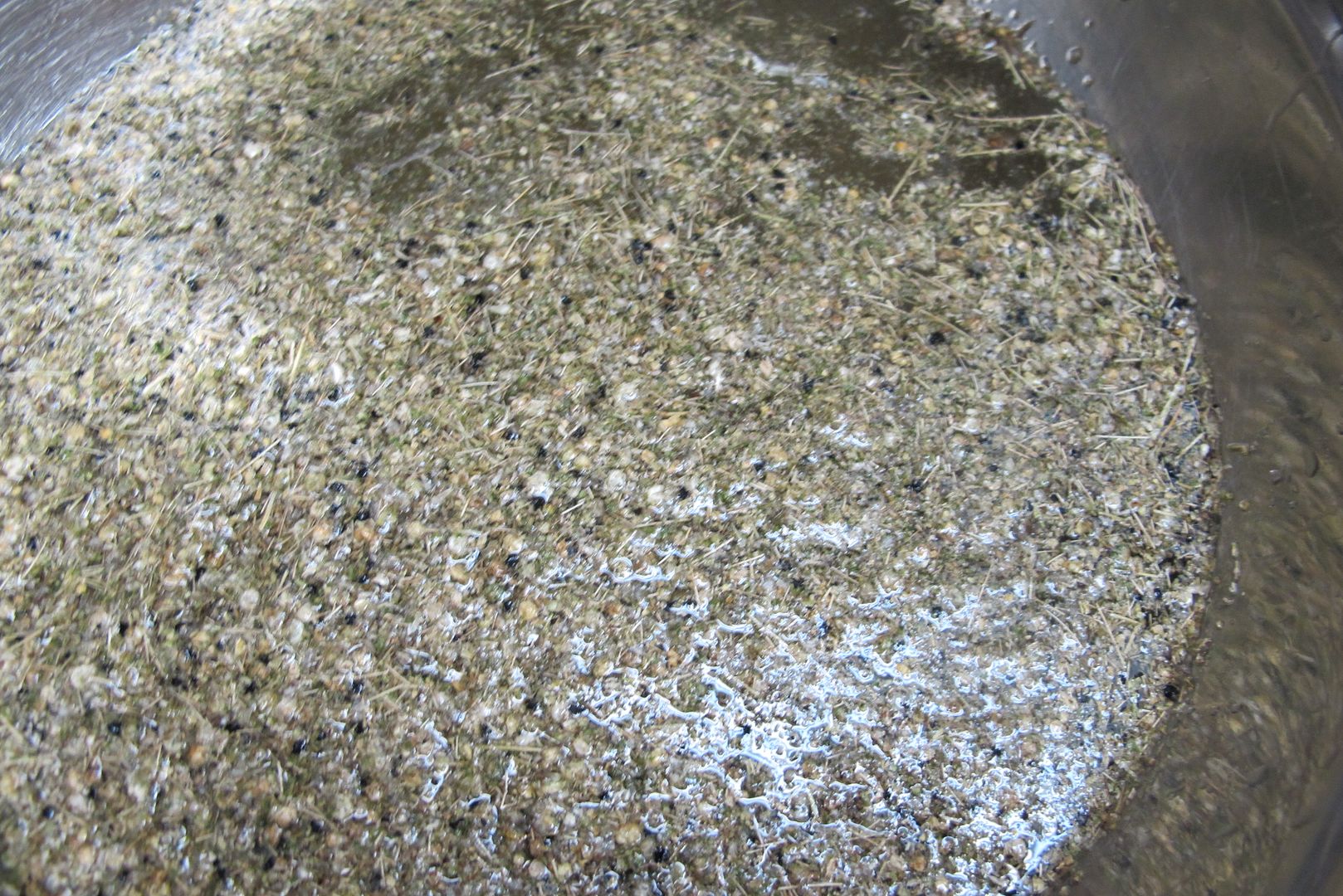 Mess of chaff, seed and water, prepare to be sorted
Mess of chaff, seed and water, prepare to be sorted.
Carefully pour off water. Use a sieve if you need to for the last part.
 Plenty of heavier seed on the bottom and a few bulbils.
Plenty of heavier seed on the bottom and a few bulbils.
Then spread out somewhere to dry such as coffee filters, paper towels or paper plates.
 Leek seed drying on paper towel. It's better on heavy paper type stuff so you won't risk sticking.
Leek seed drying on paper towel. It's better on heavy paper type stuff so you won't risk sticking.
After they dry really, really, really well, they'll be labelled and started again next year.
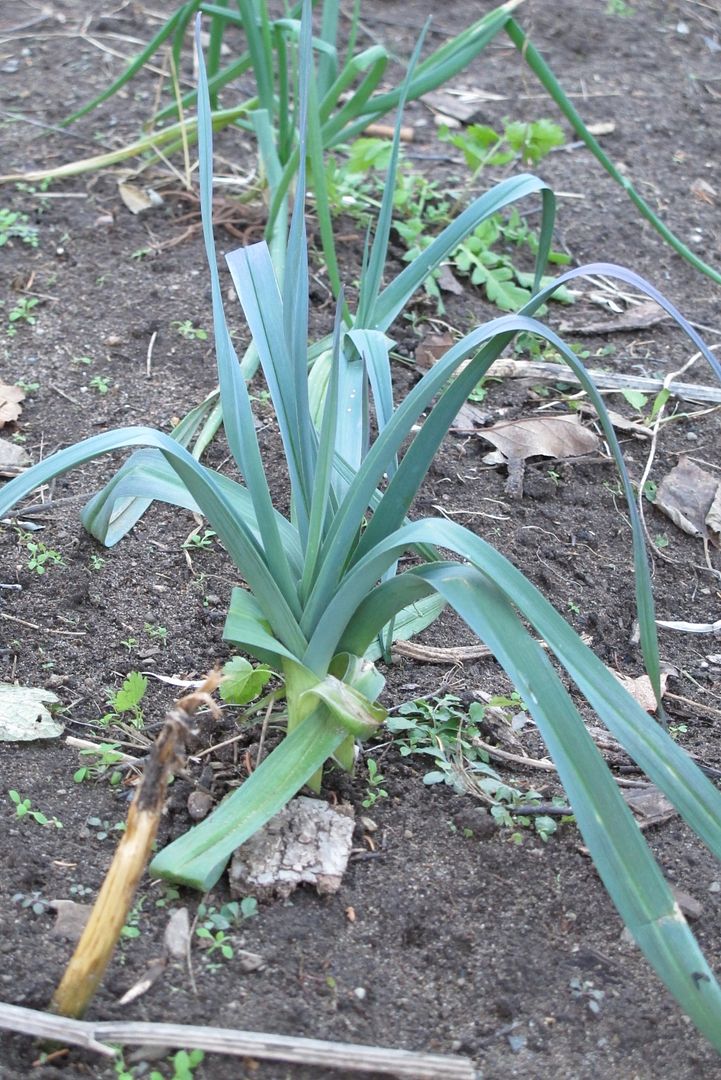 These are the 2012 offsets from the 2011 leeks.
Long Island Seed Project
These are the 2012 offsets from the 2011 leeks.
Long Island Seed Project














